Manyoya Uchawi - Feather Magic
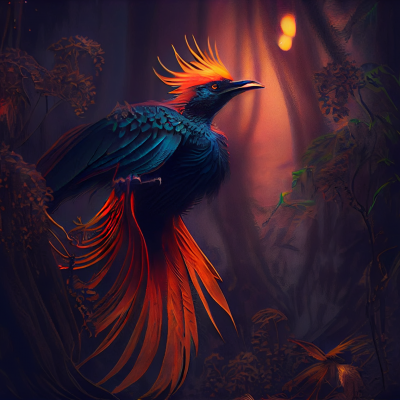 Manyoya, (unyoya:singular) also known colloquially as "dream feathers", "vessel feathers", as well as other terms specific to individual feathers or feather types. Manyoya are prepared with the wing and tail feathers of the male Mchawi Ndege, a medium sized tropical bird found exclusively in the dense rainforest habitats in the interior of the Hazina Dada islands of Divai and Embe.
Manyoya, (unyoya:singular) also known colloquially as "dream feathers", "vessel feathers", as well as other terms specific to individual feathers or feather types. Manyoya are prepared with the wing and tail feathers of the male Mchawi Ndege, a medium sized tropical bird found exclusively in the dense rainforest habitats in the interior of the Hazina Dada islands of Divai and Embe.
The birds are considered sacred by most populations in Sayarii, and Trade is fiercely regulated by the governments of Hazina Dada, Al Kathira, and Saahil ul'Sharqiu, the Eastern Empire.
The birds live under close stewardship of the the Fēixiān peoples - a highly sentient avian species that are native to the Hazina Dada islands. the Fēixiān farm extensively on the islands and are the exclusive legitimate harvesters and origin traders of the Manyoya, the long wing and tail feathers of the male Mchawi Ndege. Bright orange (or red in a sub-species found on the southern Island of Embe) the feathers of the Mchawi Ndege posses extraordinary magic. Originally the feathers were used by the Fēixiān in ceremonies honoring the dead, as a feather placed on the tongue of the deceased allowed the Fēixiān friends and relatives to revisit the recently deceased in order to say goodby and send the deceased off in a ceremonial process that apparently included the dead.
Later, it was discovered by the thaumaturges of Il-Wāāt ul'Ihāt Kathira that the feathers magical potential went considerably farther than just allowing the re-visitation of the dead in a dream like state. It was discovered that through thaumaturgic chemystry and magical distillates, the feathers can carry magic imbued from other magical species, teach, and even entertain when crafted by the Mwandishi - "Feather Scribes" that dedicate their lives to manipulating the feathers while in a trance like state archived by smoking the amber-like dried sap of the Maono Mhosa found in the Deserts of the Bara Kusini.
Fundamentally thaumaturgy defines Manyoya as a necromantic magic. The feather is a living vessel that can carry essences from and even access to the Mahali Mizuka, a space the thaumaturges theorize is found between the land of living and land of the dead. It must be noted that all knowledge on the Mahali Mizuka is highly speculative and any reputable thaumaturgist will quickly admit that the science and techniques surrounding the manipulation of the Manyoya is much more advanced than our understanding of the internal workings of the Mahali Mizuka.
Maandalizi - Preparations
The First Maandalizi - The Manyoya Ndoto ya Kifo
The Manyoya when plucked from or lost from a living Mchawi Ndege, quickly loses it's brilliant orange/red hue and change, first going pale, and then developing into to a opalescent white or silver color. The feather in this state is known as an Unyoya Bikira - and empty vessel. In a traditional application this feather is placed on the tongue of a deceased person and left there for a time - not usually exceeding five days (feathers left longer than this are considered dangerous practice, see Unyoya Mzuka for more information). The moment the feather is laid upon the tongue of the dead it begins to turn a brilliant golden yellow - and it becomes a Manyoya Ndoto ya Kifo - a Death Dream Feather.
The Unyoya Ndoto ya Kifo once prepared and placed on the tongue of a living person (or persons) will induce an immediate state of trance among all participants - and a sort of shared dream or hallucinatory access to the Mahali Mizuka and the dream story of the deceased. The participants join the deceased for a period of time defined by the the length of time that the feather was left in the mouth of deceased. The participants are added to the dream story using the dream logic of the Mahali Mizuka - altering as little as needed to make their appearance seem natural but keeping that dream logic balanced (Notes on "balance" and "dream logic" are expanded on in the section on the Mahali Mizuka). Most participants, as if in a dream, are entirely unaware that they are in the Mahali Mizuka. There are however individuals known as Mizimu or the Haunted Ones, that quickly become aware that they are in the Mahali Mizuka, and can alter details in the Mahali Mizuka, or even leave the trance if they wish, bringing everyone in the trance with them if they desire. In the traditional use by the Fēixiān any use of an Unyoya Ndoto ya Kifo would include a Mizimu shaman who would, once they became aware they were in the Mahali Mizuka, guide the deceased and their loved ones though a ceremonial process that would end when the already deceased was escorted to the land of the dead - and the participants would arouse from their collective dream state.
for a variety of reasons, outside of the Fēixiān the use of these feather is pretty rare, partly as the legal use of Manyoya Ndoto ya Kifo are controlled in most states, and technically limited to use by law enforcement, and other investigative organizations. However, yellow feathers and their bootlegs are frequently traded on the black market where they are combined with other preparations, mixed together, or combined with stories dreamed into them by Mwandishi - feather scribes, largely for entertainment or propagandistic purposes. (See Unyoya Mchanganyiko below).
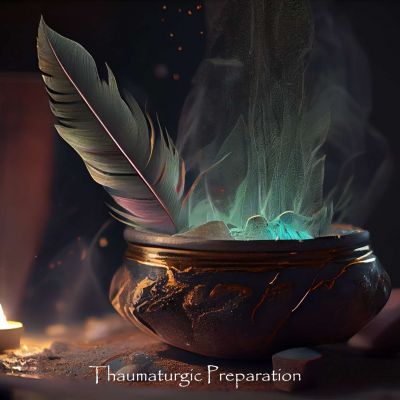 The Second Maandalizi - Manyoya ya Viungo
The Second Maandalizi - Manyoya ya Viungo
A central study of Thaumaturgy and and art originally mastered at the Kathira University in Al-Wāāt ul'Ihāt Kathira, the Second Maandalizi is the Thaumaturgic Preparation or Unyoya wa Viungo. These preparations involve the imbuing of magical properties distilled from the organs, bodily fluids, or other essences retrieved from the carcasses or remains of magical animals. The animals are carefully dissected (in rare cases some property containing elements can only be retrieved from living specimens through vivisection - a practise that has been outlawed in most of Sayarii's states however is still widely practiced in the black market), and either distilled into liquid preservations, or ground and combined with plant and/or mineral preservatives into dried powders. These distillates are mixed with chemycals and minerals, and then applied to Manyoya in special bowls, made of metals related to the magic properties being imbued into the unyoya.
- Earth magic, associated with stability, grounding, and material manifestation, is prepared in lead vessels.
- Air magic associated with intellect, communication, and change, is prepared in silver vessels.
- Fire magic associated with passion, transformation, and purification, is prepared in iron vessels.
- Water magic associated with emotions, intuition, and reflection, and the most difficult preparations to make, are prepared in vessels made of frozen mercury.
- Spirit magic associated with consciousness, healing, spirituality, and transcendence is prepared in vessels made of gold.
 Once the unyoya has been properly prepared the magic property or properties imbued in it can be passed on to an individual or individuals (the number of users is limited by the strength of the preparation and the skill of the thaumaturgist making the preparation, and varies widely). Like the number of users, the duration of the effect varies based on the skill and intent of the thaumaturgist. These variables are important in the pricing of these feathers - and help define the reputation of the thaumaturgist House.
Once the unyoya has been properly prepared the magic property or properties imbued in it can be passed on to an individual or individuals (the number of users is limited by the strength of the preparation and the skill of the thaumaturgist making the preparation, and varies widely). Like the number of users, the duration of the effect varies based on the skill and intent of the thaumaturgist. These variables are important in the pricing of these feathers - and help define the reputation of the thaumaturgist House.
Manyoya ya Viungo are green to a green-teal in color, some natural variation in pattern can be carried over from the birds original patterning adding black and/or dark gray pigments, but colors will vary only in the green - teal range with white highlighting or tufting at the base, no blue or yellow should be present.
Note: a blue pigmentation signifies that a feather has been manipulated by a Mwandishi, this indicates the feather has undergone an additional preparation and has been copied or modified, this could include Mahali Mizuka dream, and dream logic content, including advertisements, and could be a bootleg - or a generational bootleg, which should be avoided. This form of mixed or duplicated preparation is legal when done with all parties consent, and quite common (see Manyoya ya Ndoto below), so the purchase of these unyoya should be made only from reputable vendors, or a known Mwandishi or thaumaturgists House. Some highly reputed Houses of Thaumaturgy employ Mwandishi to manipulate or duplicate unyoya adding custom Mahali Mizuka dream content, product demonstrations or other instructional content making their manyoya highly sought after and expensive.
The Third Maandalizi - Manyoya ya Ndoto
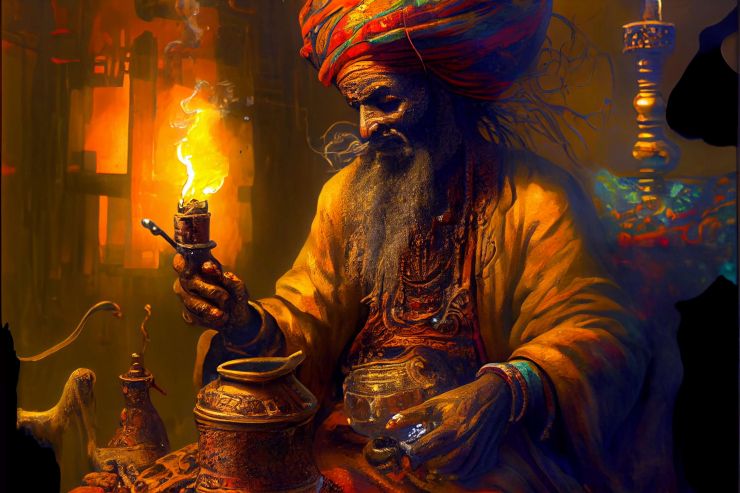
For many years, prepared manyoya remained exclusively the craft of the academics at Kathira University and the two original Thaumaturgical Houses in Al-Wāāt ul'Ihāt Kathira founded by the same academics, and largely employing the finest graduates from that institution. During this 120 year period only the green preparation was commercially or experimentally produced and available. The yellow preparation could still be made, though it remained very rare and illicit. The few feathers made were either produced under order of law enforcement or courts, or stolen by unscrupulous undertakers, and distributed as a dark market items sold to suit the morbid curiosity of those with a perverse relationship or attraction to death.
The discovery of the third preparation was made by the nomadic tribes people of the Bara Kusini, the Qāāzami.
Qāāzami mythology includes a long history of the shamanic use of sap from the indigenous desert plant the Maono Mhosa that shaman use to create a collective, shared "waking dream" or "walking dream" trance state (or trance place) they called the Mahali Mizuka, which translates roughly as "ghost place" in Qāāzana'i Kalima. The Mahali Mizuka is a hypnotic, sometimes hallucinatory state/place where they visit to "dream" and reputedly "communicate with the dead"; a claim whose interpretation is a point of heated debate within thaumaturgic circles).
Qāāzami shaman are selected by virtue of their response to the sap of the Maono Mhosa plant. The sap is dried and administered by direct smoking of the resinous sap, as well as exposure from sap burners used in the ceremonial chamber during Qāāzami cultural coming of age ceremonies. Those individuals that respond to the saps smoke and enter the collective trance during the ceremony are there presented with the option of following the shamanic path and joining the shamanic elders as acolytes.
And It ends up that responding to the chemycals in Maono Mhosa's smoke selects for that one in twenty or so individuals who can tell when they are in the Mahali Mizuka dream and manipulate it, the Mizimu - the Haunted Ones. The unique trait required to become a Mwandishi, a Feather Scribe - and the dream masters of the third preparation.
![resin[1].jpg](/application/files/2616/9342/3171/resin1.jpg) When the Qāāzami shaman were introduced to the Manyoya by traders from Al-Wāāt ul'Ihāt Kathira the Maono Mhosa in their blood opened up the Mahali Mizuka and exposed to them how it's ghostly passages are woven into the fibers of the wondrous feathers of the Mchawi Ndege. By smoking themselves into Mahali Mizuka trance in smoke-filled dens full of other Mwandishi they can deeply manipulate the feathers, loading as many as seven feathers at once, reading, mixing, duplicating, and dreaming into them, in any combination they desire.
When the Qāāzami shaman were introduced to the Manyoya by traders from Al-Wāāt ul'Ihāt Kathira the Maono Mhosa in their blood opened up the Mahali Mizuka and exposed to them how it's ghostly passages are woven into the fibers of the wondrous feathers of the Mchawi Ndege. By smoking themselves into Mahali Mizuka trance in smoke-filled dens full of other Mwandishi they can deeply manipulate the feathers, loading as many as seven feathers at once, reading, mixing, duplicating, and dreaming into them, in any combination they desire.
When the Mwandishi, manipulate, copy or alter any feather it leaves the tell tale blue pigment of the Manyoya ya Ndoto, the "Dream Feather". A pure Manyoya ya Ndoto is bright blue with touches of black or white, and is dreamed into the feather by the Mwandishi, entirely a Mwandishi preparation. These come in two distinct variants:
The first type, called Manyoya ya Kuibiwa Ndoto are necromantic in nature. The Mwandishi sit, in trance with the dying waiting for the moment they die and transition to the land of the dead. As the deceased pass the Mwandishi capture knowledge from the passing, opening the woven feather like a spiderweb in the Mahali Mizuka , catching and transcribing a life, languages, the intricacies of a profession, knowledge of the land or sea, a life of memories, and weave them into their feathers; allowing the end user to learn languages, skills, or remember living lives that are not their own. In moments.
A skilled Mwandishi will tease these memories and skills apart, scribing them to separate feathers for separate consumption. The less skilled dissections are not as clean, and languages, skills and memories may overlap, their edges unrefined. These feathers can be confusing for manyoya users who may be haunted by memories, smells, or tastes, when they utter certain words, or remember a lover they have never met while recalling a rope tying technique that was once someone else's1. Manyoya ya Kuibiwa Ndoto teach or inform - though their lessons are stolen.
The second blue preparations are called Manyoya ya Habari Ndoto - though they are far more frequently just called Habari, and even more frequently after their specifc title, for instance, the Hahari - Kisima or "the Well", a famous series of Habari Ndoto that make the users/players folk heros in a desert oasis town, constantly fighting off evil djinn disquised to fool the members of the village, all the while navigating the complex social terrain of love in the deep mysterious desert. Manyoya ya Habari Ndoto are all dream, composed and crafted by the many Houses Mwandishi, stories, epic and mundane spun by rooms full of dreaming Mwandishi, nightmares and flights of fancy, the Mwandishi can twist time, and make an afternoon in the garden into a lifetime growing old minding an orchard or having the flesh picked off your bones by fish as they fall slowly toward the sand in the seas darkest depths. Most that partake don't know they they are dreaming until the Mahali Mizuka fades and they wake up not having slept. Manyoya ya Habari Ndoto are entertainment, escapism, living myth, and for many deeply addictive. For some the Manyoya ya Habari Ndoto might become a maze they never escape. though there are very few that can afford to waste away with a blue feather between their lips, as the supply of Manyoya is ulitmately limited by how many feathers the birds can give - and they must give the feathers, as a manyoya turns black and deadly when the bird it comes from dies, an unyoya kifo, so as popular as Manyoya ya Habari Ndoto are, the prices of these dreams are high enough that few can afford to dream themselves to dust.
The Mixed Maandalizi - Manyoya Mchanun'yiko
While the two preparations of the Manyoya ya Ndoto opened the eyes of thaumaturgists to new miracles, it was the Manyoya Mchanun'yiko that was truly revolutionary and from the moment the first specimens were presented to the council 230 years ago Thaumaturgy would never be the same. Thaumaturgy loved Manyoya, but the finest craftsmen were still more interested in imbuing their distilled and obsessed over powders and oliy essences into tangible objects - rings, sigils, statues, clothing, permanent objects that could be used over and over - permanent magic - like the Willow Stones, themselves a revolutionary invention, that light the streets and homes of the wealthy and illuminate the restaurants, bars, and dens that are so popular across the ciy of Al-Wāāt ul'Ihāt Kathira. Small chips of Quartz or other semi precious stones, cut or polished and imbued with a tiny fraction of the magic distilled from but a single willow wisp.
Manyoya feathers were still reasonably rare, trade routes and regulations weren't yet in place - They were initially traded by the Seaborn as an oddity, a unique and exotic item, sold from a stash box on the docks, a brilliant silver feather, with magical promises, or a way to speak to the dead - directly.
But when the Mwandishi's Manyoya Mchanun'yiko was brought forth to the council, the Manyoya overnight became the highest form of Thaumaturgy. For the Mwandishi not only could weave dreams into the feathers, they could take multiple feathers, individually, and as a group, and write them - duplicate them, mix them, to a new multicolored specimen...
...Now green and blue, a green preparation, perhaps a Manyoya ya Viungo that provides healing, or one that allows the user to control fire, both expensive to make, consuming material that would better be used to make an item that could be used repeatedly. The feather was a nice vessel, but it was wasteful, and didn't last. But, the Mwandishi could take those two feathers away overnight, and bring back with them a hundred feathers of a variegated green on one side, a brilliant blue on the other... Now the feathers allowed the users to control fire, and the heat was healing to them.... two green's combined, and duplicated a hundred times. The original feathers had all gone gray, but a house Mwandishi could create duplicates of duplicates...at least a few times. A little more work and the feather teaches them to use their new power... or advertises other products. Green and blue preparations are quite common, and generally legal. Sold broadly, green feathers are generally quite rare on their own, most common at the university, or among thaumaturgists, experiments, originals.
.. Yellow and blue, a blended preparation, yellow manyoya, once the last days or hours of the deceased - used by law enforcement to solve killings and discover motives, suddenly could be duplicated - shared, interpreted. But with that duplication, could come alteration - quietly the Mwandishi could change the story, weaving their dreams, their motives, their shared desires, and fears into the new feather, they couldn't change the outcome of the story, but they could change the rest of the story, making the righteous dead a villain, a poor man rich, even change the where the how.... Yellow and blue preparations are as illicit - if not more than that possession of a yellow alone. They are also exchanged widely on the black market - some as entertainment, some as propaganda, always dark rationals... but not as dark as...
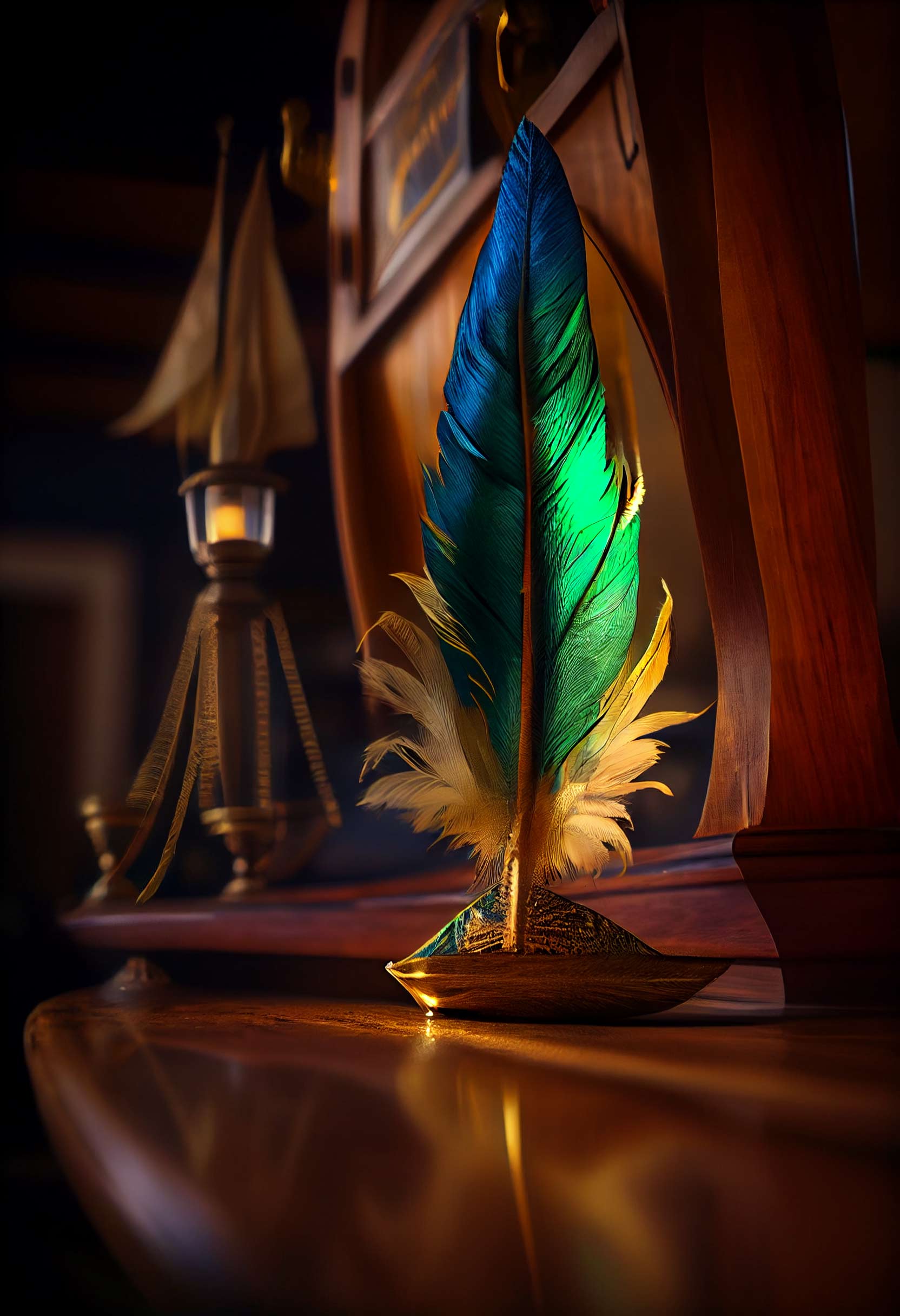 ... Yellow blue & green, vanishingly rare in the wild. even most black market brokers of Manyoya avoid Manyoya ya Rangi Tatu - the three color feather, Completely illegal even to law enforcement, this combination is the only preparation in which when a user dies in the Mahali Mizuka dream - they actually die in the real. All three preparations: yellow bring death to the table - not just dream death, the real thing. Green brings the hands of thaumaturgy, enchantments, special abilities, curses, the light or the foulest darkness that mans mind can devise. Blue brings the dreams, the nightmares the most beautiful and heinous objects of man's imagination. These three colored specimens are considered a one way ticket to madness, oblivion or places worse. Any therapeutic value they might have is lost to the pure fear of what they might do.
... Yellow blue & green, vanishingly rare in the wild. even most black market brokers of Manyoya avoid Manyoya ya Rangi Tatu - the three color feather, Completely illegal even to law enforcement, this combination is the only preparation in which when a user dies in the Mahali Mizuka dream - they actually die in the real. All three preparations: yellow bring death to the table - not just dream death, the real thing. Green brings the hands of thaumaturgy, enchantments, special abilities, curses, the light or the foulest darkness that mans mind can devise. Blue brings the dreams, the nightmares the most beautiful and heinous objects of man's imagination. These three colored specimens are considered a one way ticket to madness, oblivion or places worse. Any therapeutic value they might have is lost to the pure fear of what they might do.
Additionally, These feathers allow users the potential to bring objects and even beings, back to the real world - an act that has real world implications and effects - as the dream logic comes into play and balance between the worlds is always made, and it can be catastrophic, and deeply personal. The tri-colored feather is Illicit magic under the laws of Al-Wāāt ul'Ihāt Kathira's thaumaturgic society, the same laws that outlaw probability magic and the items that use it from before the Karithat ul'Qadima - The Great Fall. The production of these feathers can bring the death penalty, and possession can land you in jail for life.
The limits of what can be done with this three fold preparation is uncharted territory, as experimentation with the preparation is forbidden.
Occasionally a disaster will occur, a neighborhood will vanish, a beast will be mysteriously summoned, half the souls at a market will simply vanish, their clothing and the things they are carrying left lying on the cobblestones... Rumors will start... Feathers will be blamed. Someone took a mixed feather... Someone is making them, selling them? The djinn are blamed as often as not, but in truth they are rarely involved.
1. Referenced from an actual case. In a popular sailing knowledge unyoya - duplicated many times both legitimately and in bootlegs, a standard knot called the bowline knot was strongly associated with a sailors longings for a young lover. An editing error made by the feathers original Mwandishi capturing an errant memory from the sailor from whom the skills were gleaned. The knot has now become affectionately known by her name in the minds of the thousands of sailors who shared the feathers in pubs and alleys before walking to the docks to find a lifetime of work, and is now as frequently called a "Penda" as it is a bowline across the oceans of Sayarii.
Visual Glossary: Manyoya

Unyoya Bikira
An un-prepared feather, empty, not yet written, blank. Silver to a metallic white in color.

Unyoya Ndoto wa Kifo
The First Maandalizi, the original Fēixiān Necromantic Preparation.

Unyoya wa Viungo
The Second Maandalizi: the Thaumaturgic Preparation

Unyoya wa Kivuli Ndoto
A pure Specimen of the Third Maandalizi
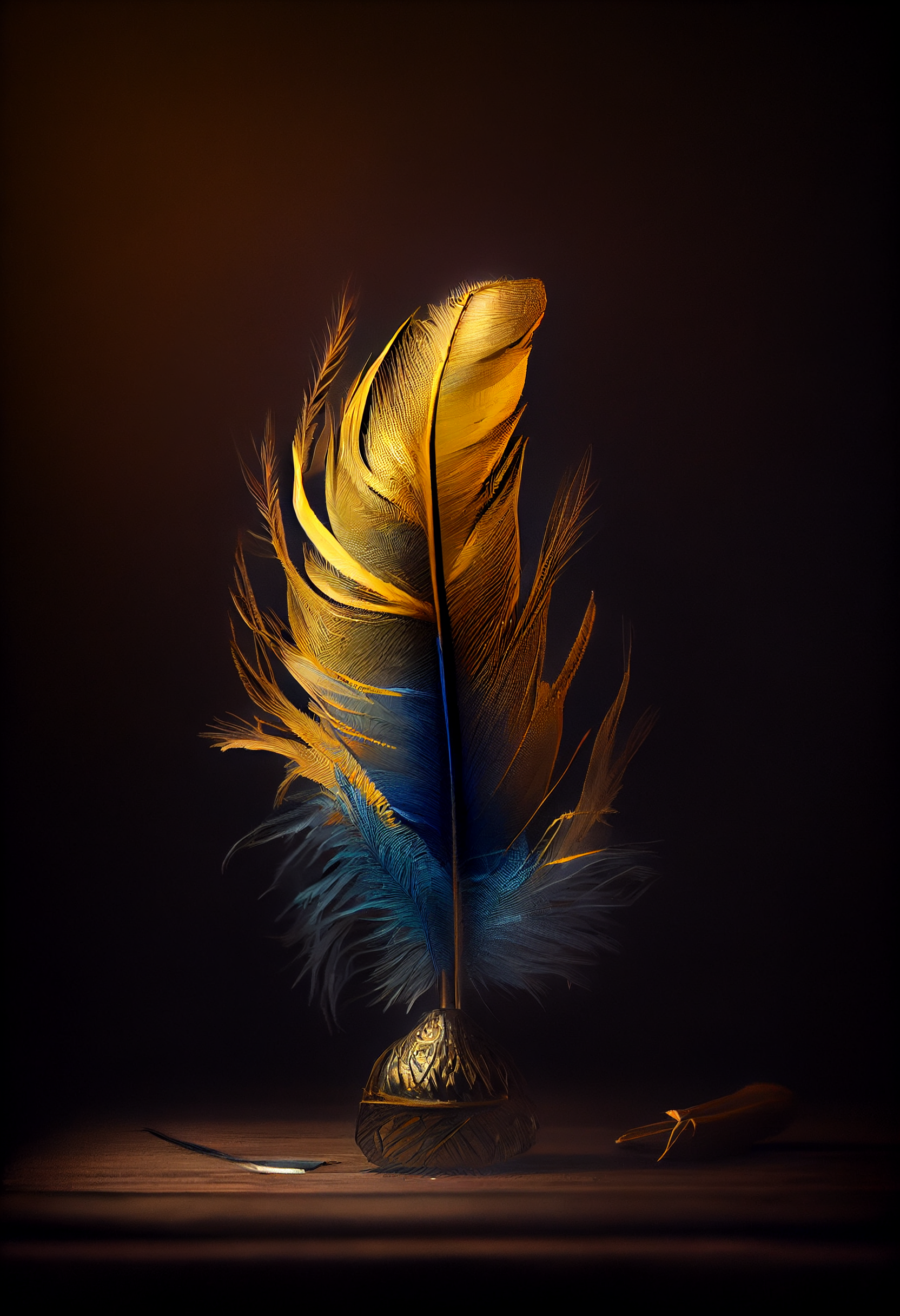
Unyoya Kamili
A general term used to describe a charged feather, written, unused. Charged feathers come in the 4 preparations.
Displayed is a Manyoya Mchanun'yiko - yellow and blue, unusual and illegal for the public to posses. The blue Unyoya wa Kivuli Ndoto, and the blue and green Manyoya Mchanun'yiko are the most common feathers.
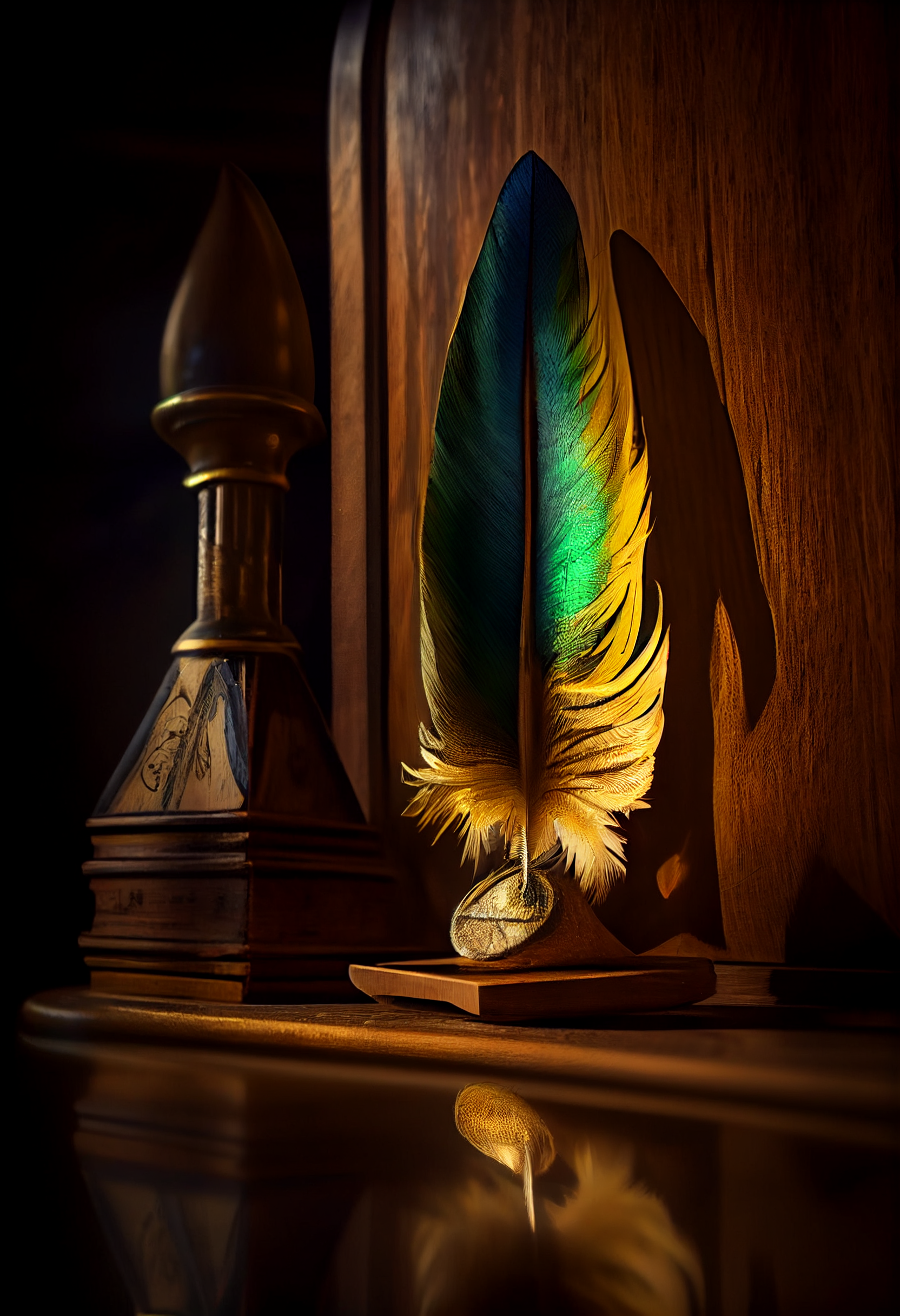
Manyoya Mchanun'yiko
Mixed Preparation
Displayed is the Manyoya ya Rangi Tatu, a rare and elicit three colored preparation. The green and blue version of the Manyoya Mchanun'yiko is quite common, and generally legal to purchase and produce.
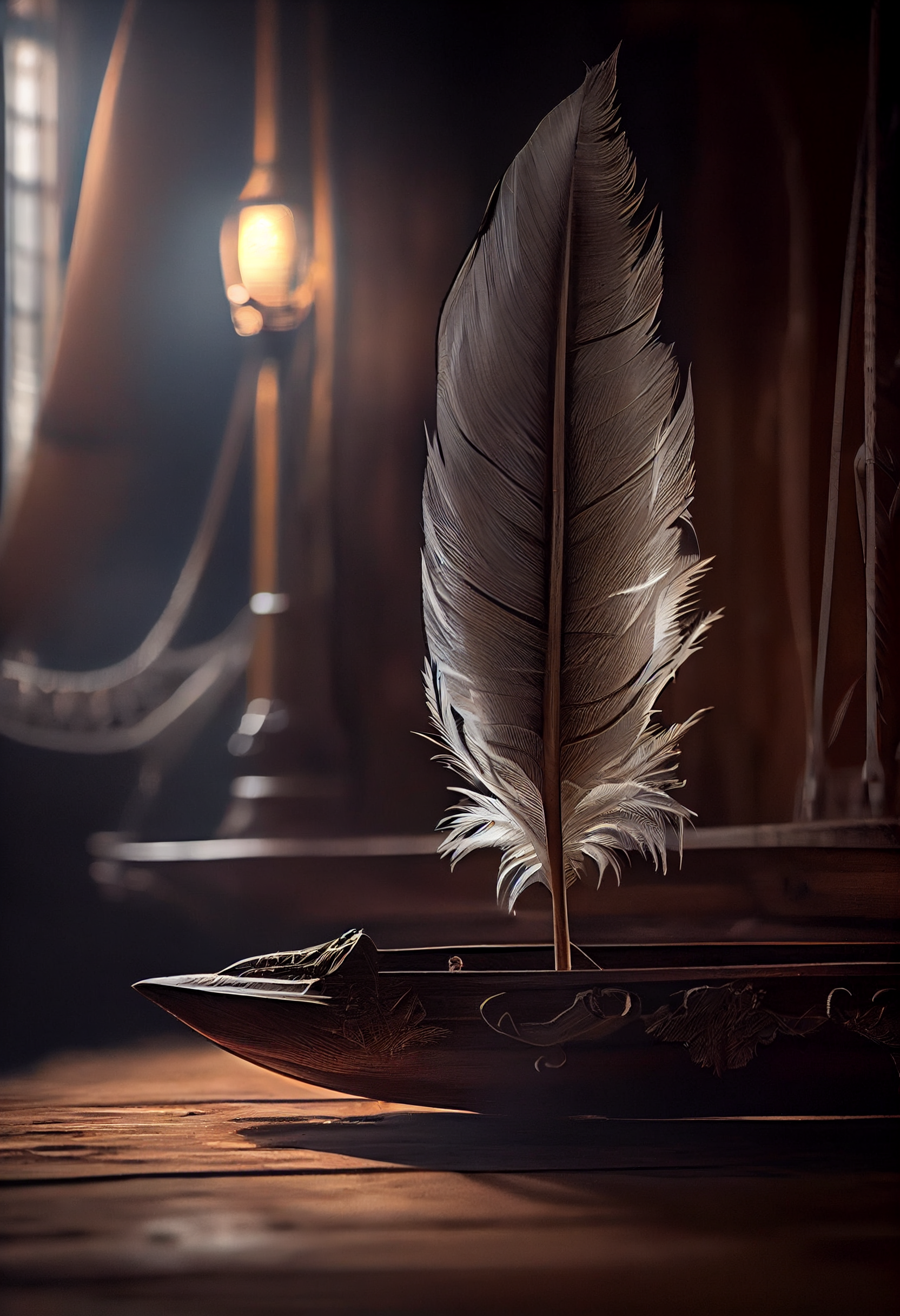
Unyoya Tupu
A spent feather. Drab grey in color. Manyoya tupu decay and turn to dust within a day after use.
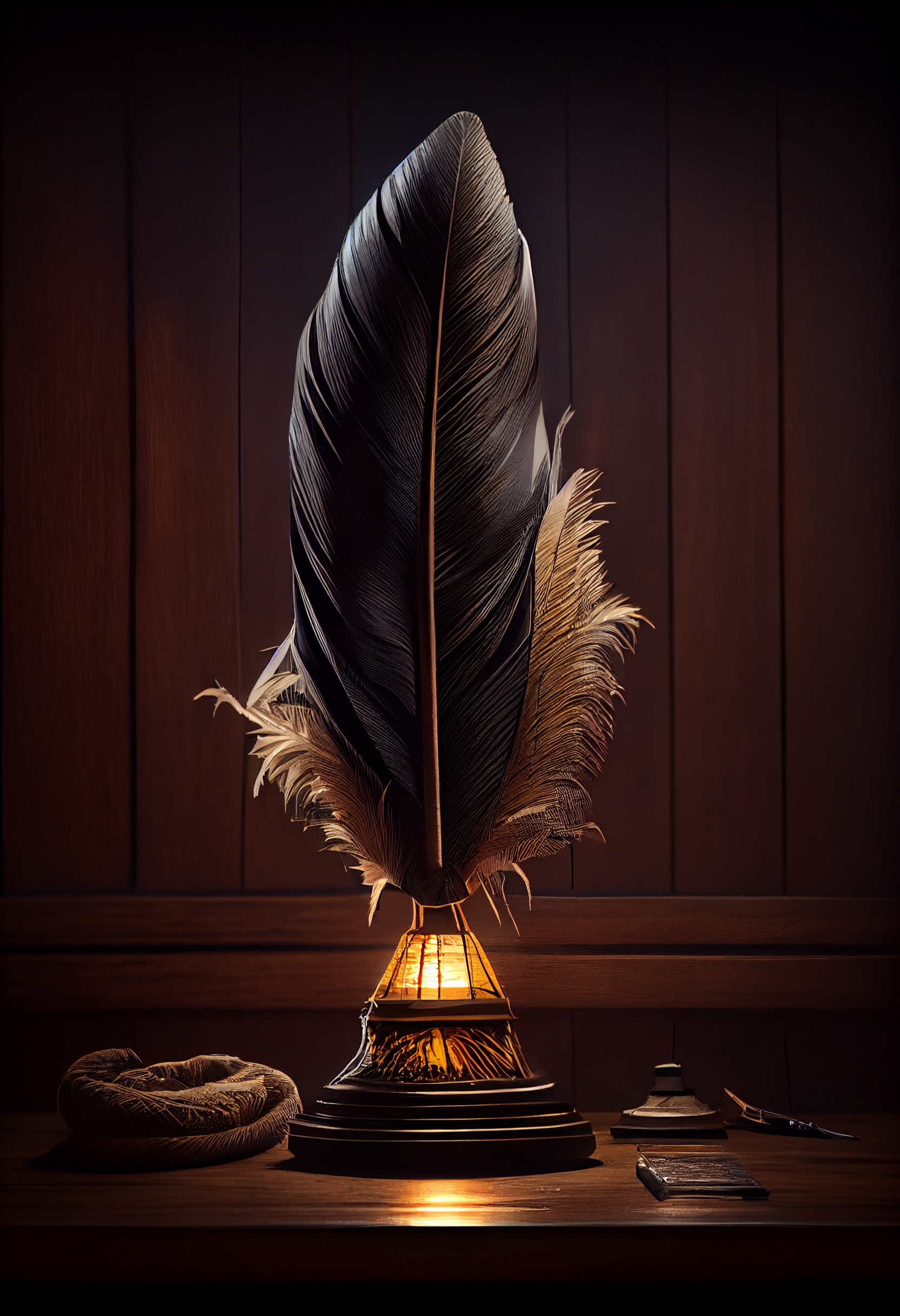
Unyoya Kifo
A death feather. The feather of a dead Mchawi Ndege. Taking an Unyoya ya Kifo results in immediate death.